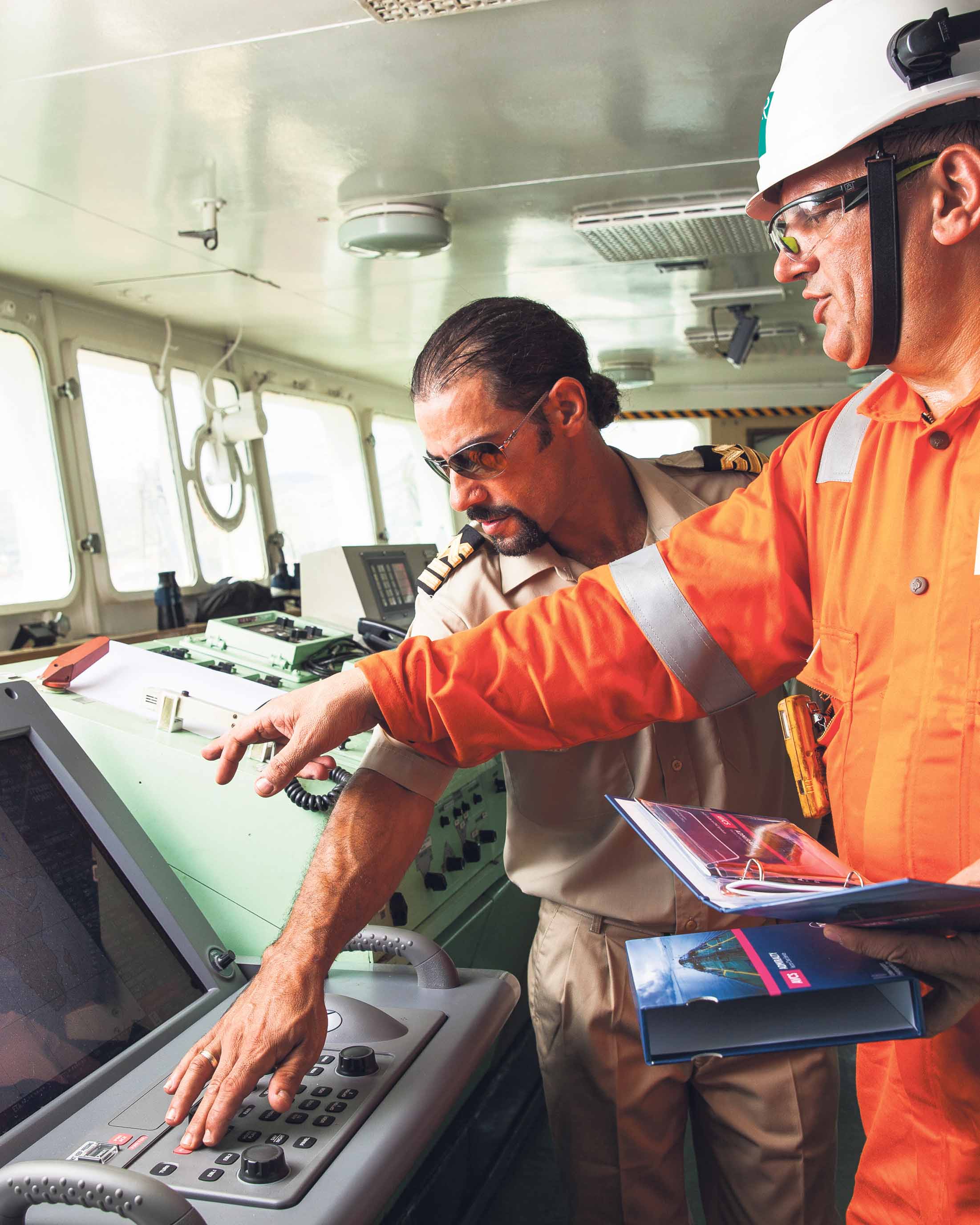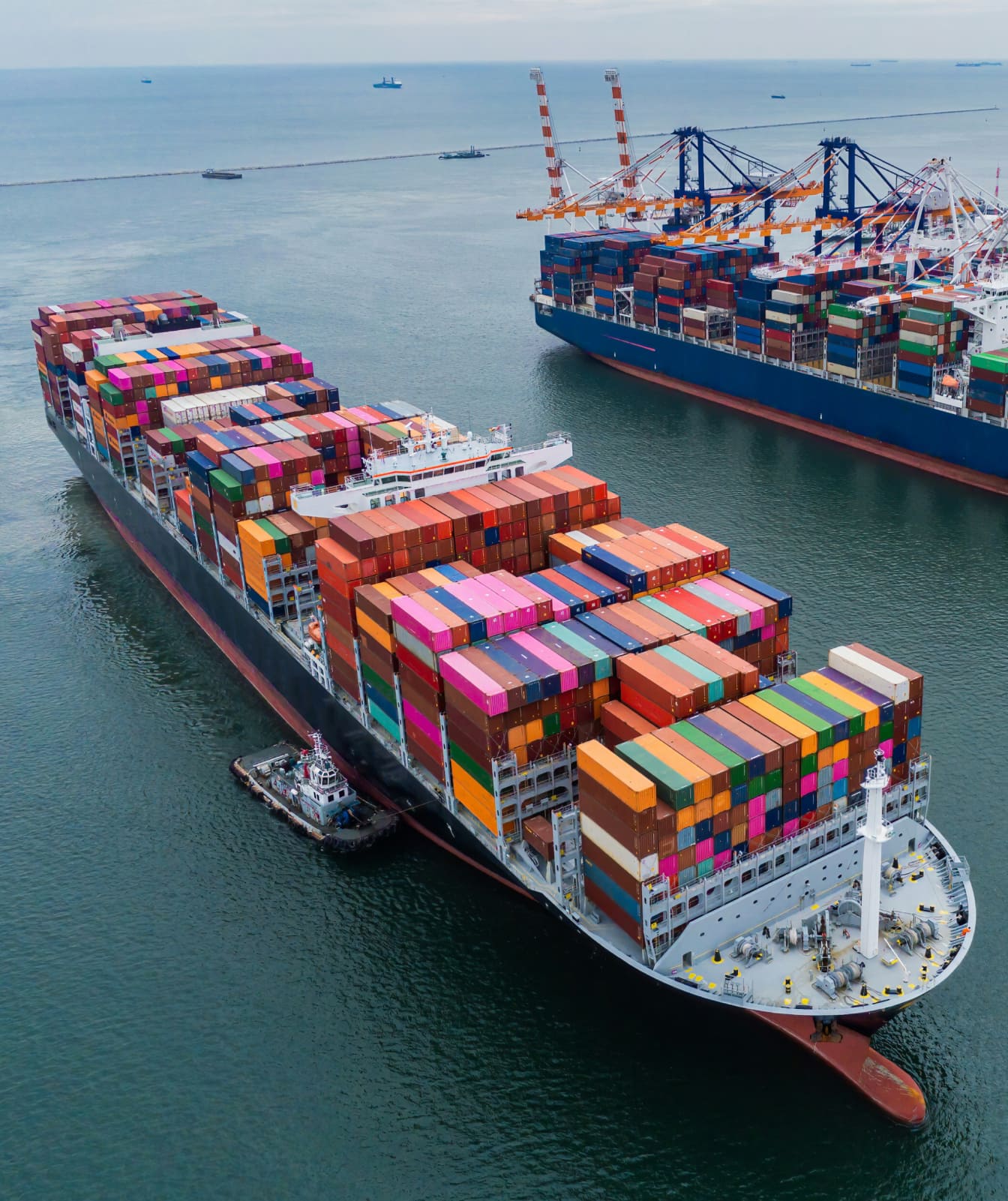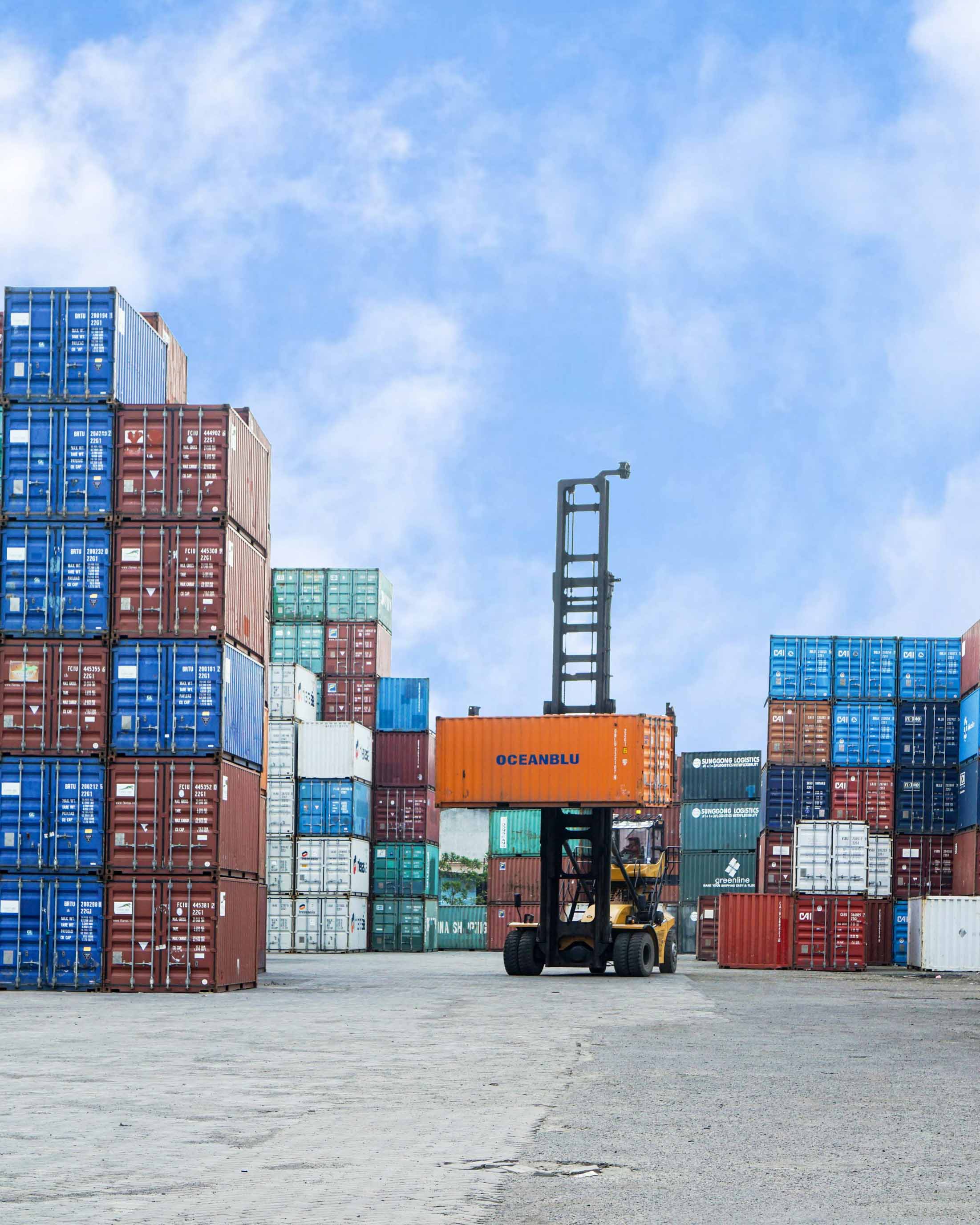Executive summary
The maritime industry finds itself at an inflection point. In the current day and age, maritime organizations that embrace digital transformation will capture additional market share fast, reduce operational costs significantly, and meet emerging sustainability requirements. Those that delay digital adoption risk obsolescence in a rapidly evolving market.
In this article, we explore the many different faces of digital transformation in maritime and pinpoint exactly why it's no longer an optional route to navigate for maritime leadership.



Why digital transformation in maritime cannot wait.
Insiders say the maritime industry is experiencing its most significant disruption since containerization back in the 50's. They might just be right, as operational changes in global shipping are numerous.
On the one hand side, global shipping demand continues to rise. At the same time, however, current market pressures are questioning to which extent traditional operational models can meet the new standards as well as the most ambitious customer expectations. As a business leader, the question is no longer whether to transform your organization, but whether your organization will lead the transformation or struggle to catch up.
That's the real question today.
According to a global maritime market analysis, conducted by Spherical Insights & Consulting, the global maritime market is projected to grow from USD 2.36 trillion back in 2023 to USD 2.75 trillion by 2033. That's an average annual growth of 5.55% (CAGR) in the time span of precisely a decade.
However, this growth will not be evenly distributed. Growth will flow to organizations that can meet today's challenges best. Amongst these challenges are improving operational efficiency and service reliability, increasing transparency on sustainability efforts while ensuring continuous profitability.
Digital transformation is the primary mechanism that will decide whether organizations will lead or lag the industry both in the current and the next decade.
Today's business reality, however, is obvious:
- Operational costs matter more than ever. Fuel represents a large part (approx. 40-60%) of vessel operating costs, meaning every percentage point of efficiency gains directly improves profitability.
- Customers increasingly demand visibility and sustainability, with major shippers now requiring real-time cargo tracking and proof of emissions reduction.
- Regulatory pressure is accelerating, as the International Maritime Organization's 2050 decarbonization targets are forcing fundamental operational changes.
- Finally, talent competition is intensifying. Younger, tech-savvy professionals expect modern digital tools, and your ability to attract and retain talent depends on operating modern systems.
As a global innovation studio for the maritime industry, we emphasize that digital transformation addresses all these challenges simultaneously.
Introducing digital tools and tracking software, therefore, is not an isolated technology project. It's a 360° business transformation that positions a maritime organization today for sustained competitive advantage as from tomorrow.
True transformation requires the ability to question current operations in such a way it allows you to shift from reactive, experience-based decision-making to proactive, data-driven optimization. Instead of responding to equipment failures, digital allows you to predict them before they happen.
Understanding digitization in a maritime context.
Going digital when you're in maritime operations goes far beyond installing new software or collecting data. Adding plain tech layers on what's already there is not what you're after.
Going digital means reimagining how your organization actually creates value. How decisions are made and how data can support it. And how you service your customers from within, proactively.
True transformation requires the ability to question current operations in such a way it allows you to shift from reactive, experience-based decision-making to proactive, data-driven optimization. Instead of responding to equipment failures, digital tools allow you to predict them before they happen. Instead of following traditional routes "because that is what you have been doing for ages", digital tools allow you to optimize the route in real-time depending on weather conditions, fuel consumption, port delays and so on.
Transformation also requires organizational evolution, restructuring how teams collaborate and breaking down silos between vessels, ports, and shore-based operations. This enables cross-functional data sharing that surfaces insights invisible to individual departments.
Equally important is customer relationship transformation, moving from transactional shipping relationships to partnership-based offerings that provide customers with unprecedented visibility, predictability, and reliability that command premium pricing.
With the maritime industry digitally maturing, the transformation is accelerating. These developments are driven by technological advancements and the non-negotiable need for efficient, sustainable operations. According to maritime software market analysis from Spherical Insights & Consulting, cloud-based solutions now dominate maritime software with 68.5% market share in 2024, reflecting the industry's recognition that digital tools deliver tangible business returns.



The business case for digital transformation.
In an industry cemented in history, executive boards obviously demand clear financial justification. Digital transformation in maritime operations delivers measurable returns across three critical dimensions: growth, operational efficiency, and sustainable impact.
Digital capabilities enable you to serve customers that traditional operators cannot reach. Real-time tracking, predictive models, and emissions monitoring unlock contracts with sustainability-focused shippers who previously had no carrier option matching their requirements.
1. Growth: capturing market opportunity through digital transformation.
According to a 2023 McKinsey research, carriers can achieve revenue uplift of 5-10% within two years of successful digital transformation, as customers increasingly prioritize companies with superior visibility, predictability, and documented sustainability performance.
Clearly, advanced digital capabilities enable you to serve customers that traditional operators cannot reach. Real-time tracking, predictive models, and emissions monitoring unlock contracts with sustainability-focused shippers who previously had no carrier option matching their requirements.
Once again referring to the Spherical Insights & Consulting's global maritime market analysis; in a market growing at 5.55% annually, digitally advanced operators can capture 7-10% market share growth while competitors achieve 4-5%. Over five years, this translates to a 15-30% larger market position.
Digital capabilities also create opportunities for entirely new services that didn't exist before; predictive analytics sold to customers, data-driven logistics optimization services, or performance-based shipping contracts structured around guaranteed service levels.
According to a 2022 McKinsey research, companies that successfully digitize their supply chains can expect annual revenue growth of 2.3% and EBITDA improvements of 10-20%. For a mid-sized shipping company with USD 500 million in annual revenue, this translates to USD 11.5 million in additional annual revenue and USD 5-10 million in EBITDA improvement, achievable within 18-24 months of transformation execution.
Maintenance cost reduction through predictive maintenance powered by real-time data reduces unplanned downtime and extends equipment lifetime significantly.
2. Operational efficiency: direct profit improvement.
Digital transformation drives operational efficiency improvements across every aspect of maritime operations.
AI-powered route optimization and vessel performance management typically deliver 8-15% fuel consumption reductions, according to McKinsey research. Given that fuel represents 40-60% of vessel operating costs, these efficiency gains translate directly to bottom-line profitability. The optimization occurs through continuous analysis of weather patterns, ocean currents, and vessel performance data to identify the most efficient routes and speeds.
Predictive maintenance powered by real-time operational data fundamentally changes how maritime organizations manage their assets. By monitoring actual equipment condition rather than following fixed schedules, companies can potentially reduce unplanned downtime by approx. 30-50% while extending equipment lifetime by 20-40%. This shift from reactive emergency repairs to planned interventions based on data eliminates the most expensive maintenance scenarios while improving vessel reliability.
Port operations benefit significantly from real-time data visibility. Better coordination between vessels and port authorities reduces port stays, directly lowering operating costs and improving asset utilization. Digital platforms also optimize crew scheduling and reduce overtime through better planning and remote monitoring capabilities. Real-time cargo condition monitoring enables early intervention that prevents damage, particularly valuable for temperature-sensitive shipments where prevention is far more cost-effective than managing claims after delivery.
According to McKinsey research on maritime transformation, companies implementing comprehensive digital initiatives achieve 10-20% EBITDA improvements and typically realize 100% ROI within 18-24 months.
The combination of fuel savings, maintenance optimization, improved port efficiency, and reduced cargo damage creates substantial and measurable value for organizations that execute digital transformation effectively.
Digital transformation enables considerable, measurable, and verified emissions reductions through optimized routing, improved fuel efficiency, and operational refinement.
3. Sustainable impact: meeting regulatory requirements and stakeholder expectations.
Maritime transport is responsible for approximately 2-3% of global greenhouse gas emissions, according to International Maritime Organization data. Digital transformation enables measurable, verified emissions reductions of 15-30% through optimized routing, improved fuel efficiency, and operational refinement. The IMO's 2050 decarbonization targets and evolving regional regulations require documented emissions tracking. Digital systems provide automated compliance monitoring and reporting, reducing regulatory risk significantly.
ESG-focused investors, customers, and talent increasingly prioritize maritime companies demonstrating authentic sustainability commitment. Digital transformation enables transparent sustainability measurement and communication that these stakeholders demand. Real-time visibility and predictive analytics create more resilient supply chains that weather disruptions better, protecting customer relationships and market reputation.
For many maritime organizations, sustainability improvements are no longer "nice to have". They're existential. Digital transformation makes sustainability achievable while improving profitability, enabling organizations to meet environmental requirements without sacrificing financial performance.



How Made helps maritime organizations navigate digital transformation.
At Made, we know that maritime innovation is fundamentally different from other industries.
"We look at a ship like it's a box. A regulated one, that operates in salt, heat, cold, vibration, and imperfect connectivity", says Joos Van den Bergh, Director Maritime & Logistics at Made. "Thinking outside that box does not work. Typical for maritime innovation is that digital solutions copied from elsewhere often fail at sea because they're not grounded in operational reality."
"We've spent over 15 years now building our expertise from the inside out. That means understanding the hull, the people, the routes, the constraints, the paperwork, and the weather windows. This isn't about bringing bold 'out of the box' ideas to maritime. It's about knowing the box intimately and building solutions that fit from day one."
"In the current day and age, we see a growing demand from our clients for digital tools that integrate seamlessly into daily workflows, giving fast access to the right information for all kinds of users. That means it requires data to be presented with the right context. Whether it's making data travel across ecosystems for decarbonization reporting, leveraging high-frequency sensor data for automated workflows, or developing AI-powered predictive models; everything must align with the real needs of the people who use it.
"That's why our approach focuses on minimum viable workflows, not just minimum viable products. We measure what matters, tie features to hard metrics like CII score improvements or verified fuel savings, and ensure solutions earn trust from day one. Because in maritime, there are no second chances."
Made's track record includes working with leading maritime organizations like CMB.Tech, Lloyd's Register, PSA, and Spliethoff to clean up dirty data, centralize operations, launch new services, and unlock fresh business models.
"Even though the industry still has a long way to go, the capabilities and adoption of digital tools is accelerating," Van den Bergh notes. "Given the competitiveness of this industry, proper use of your data today is key for having a competitive edge in the years to come. At Made, that's what we do for maritime businesses: we make data travel across ecosystems and bring it to good use for purposes of growth, operational efficiency and/or sustainable impact."
The data in this article was retrieved from the following sources.
- Spherical Insights & Consulting. (2024). Global Maritime Market Analysis 2023-2033. www.sphericalinsights.com
- McKinsey & Company. (2023). Digital logistics and the technology race gathers momentum. Retrieved from www.mckinsey.com
- McKinsey & Company. (2022). How to transform your shipping company. Retrieved from www.mckinsey.com
- McKinsey & Company. (2017). Digital transformation: Raising supply-chain performance to new levels. Retrieved from www.mckinsey.com
- International Maritime Organization. (2023). IMO 2050 Decarbonization Strategy and Interim Targets. www.imo.org
- Statista & Global Cybersecurity Market Research. (2024). Global Cybersecurity Market Growth Forecast 2022-2030. www.statista.com
- World Economic Forum. (2023). Maritime Industry Digital Transformation Report. www.weforum.org








